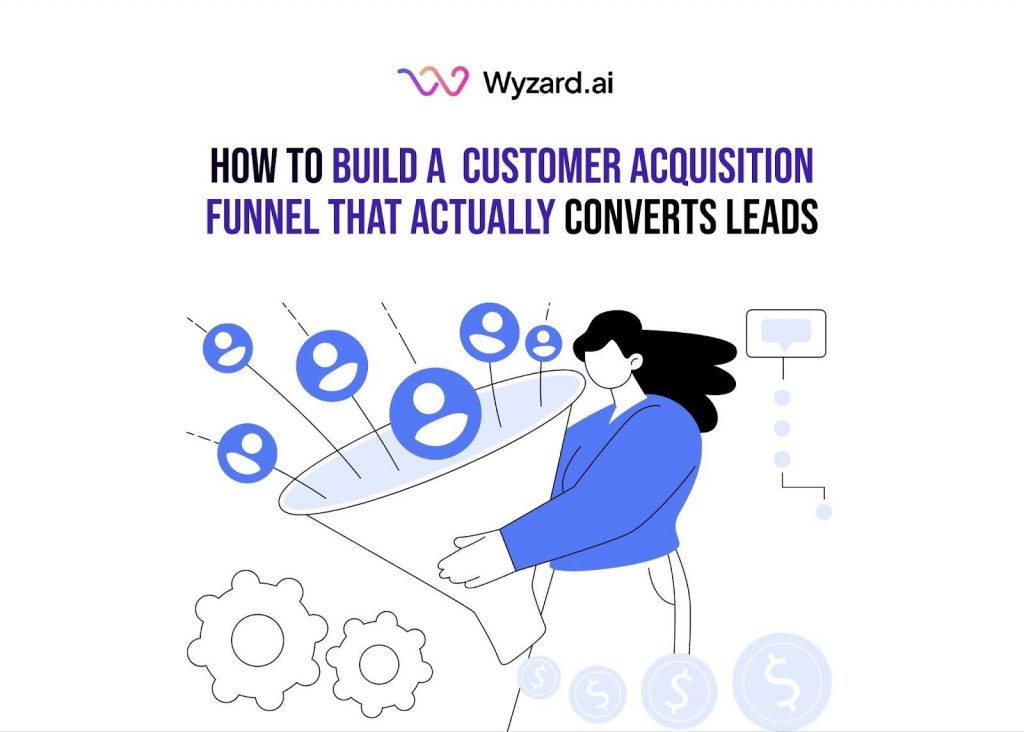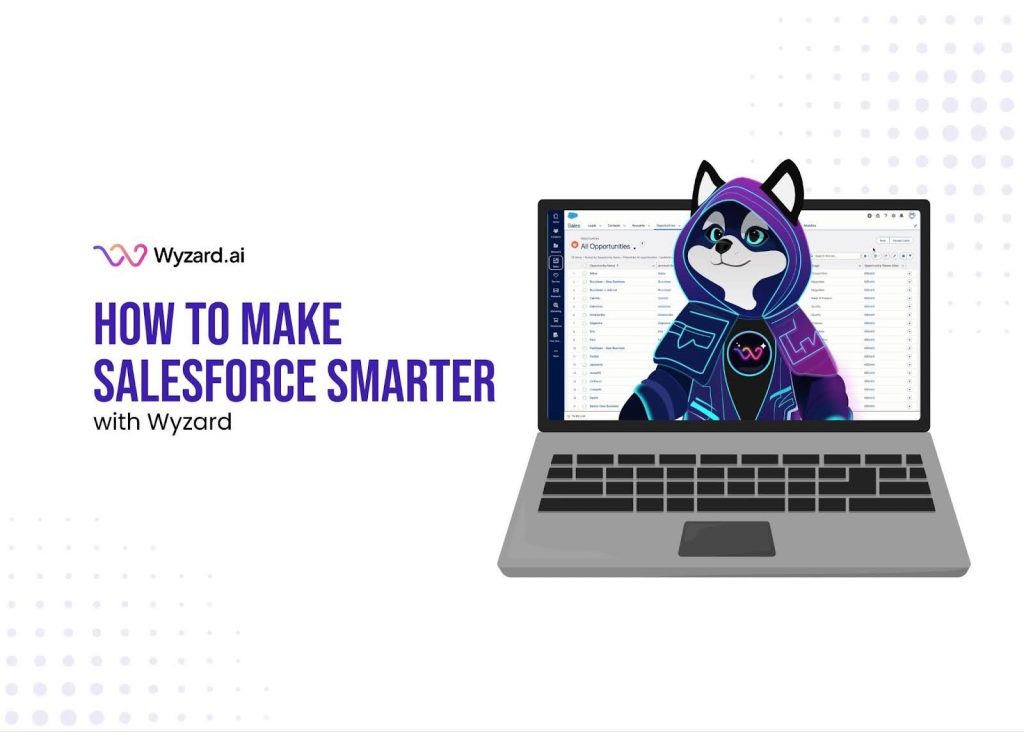You're generating traffic. Leads are visiting your website. But conversions? They're barely moving the needle. The problem isn't your ...
AI Lead Nurturing vs Manual Lead Nurturing: Which Works Better for Sales Teams


Subscribe Now
You’re watching qualified leads slip through the cracks. One visits your pricing page at 11 PM. Another downloaded your case study over the weekend. By Monday morning, when your sales team finally reaches out, those prospects have already moved on to competitors who responded instantly.
This isn’t a headcount problem. Adding more SDRs won’t fix the fundamental issue: buyer signals happen 24/7, but traditional lead nurturing operates on business hours. The question isn’t whether you need better lead nurturing, it’s which approach actually converts interested prospects into pipeline.
Modern GTM teams face a choice between AI-driven lead nurturing that operates continuously and manual approaches that offer human connection. Both promise results.
What Makes AI Lead Nurturing Different from Manual Approaches?
AI lead nurturing uses machine learning to analyze prospect behavior across multiple touchpoints and automatically trigger relevant responses based on buying signals. Instead of waiting for someone to schedule follow-ups, the system detects when a prospect visits your pricing page, reads specific content, or shows other intent signals, then responds immediately.
Traditional manual approaches depend on sales reps remembering to follow up, crafting individual emails, and tracking prospect engagement through spreadsheets or basic CRM tasks. The human touch feels personal, but it’s constrained by working hours, memory limitations, and the reality that one person can only handle so many conversations simultaneously.
The core difference isn’t automation versus personalization. AI-driven systems can deliver highly personalized content at scale by analyzing which messages resonate with similar prospects. Manual approaches offer authentic human connection but struggle to maintain consistency when managing dozens of active conversations.
Why Manual Lead Nurturing Takes Too Much Time for Sales Teams
Manual processes drain productivity faster than most GTM leaders realize. Your sales reps spend roughly 18 hours or more per week just managing routine follow-ups. That’s nearly half their working time consumed by tasks that don’t require human judgment.
Here’s what actually happens during a typical day:
Morning email catch-ups: Reps sort through overnight inquiries, prioritize responses, and craft individual replies to prospects at various stages. Some emails get missed. Others receive generic responses because time runs short.
CRM updates and data entry take another hour: Logging calls, updating opportunity stages, and adding notes from conversations. Without this administrative work, the rest of your team operates blind, but it’s time not spent selling.
Follow-up scheduling becomes a puzzle: Remembering who needs a check-in this week, who should receive a case study after their demo, and who went quiet after the initial conversation. Mental bandwidth gets depleted tracking these details across 40-60 active prospects.
The math doesn’t work. When each meaningful prospect interaction requires 15-30 minutes of prep, execution, and follow-up, your reps hit capacity quickly. They either sacrifice quality or limit quantity, neither option improves the pipeline.
This time crunch explains why response times stretch to 24-48 hours even for hot leads. Your team isn’t lazy or disorganized. They’re simply overwhelmed by the volume that exceeds human processing capacity.
How AI Lead Nurturing Handles Scale Without Adding Headcount
Sales teams using AI lead nurturing can engage hundreds of prospects simultaneously without hiring additional SDRs. When someone shows buying intent—downloading a whitepaper, attending a webinar, or repeatedly visiting product pages, the system captures that signal and initiates appropriate follow-up instantly.
Consider what happens during a typical product launch. Your marketing campaign generates 200 new leads over a weekend. With manual strategies, those prospects sit in your CRM until Monday morning. By then, response times have stretched beyond acceptable windows, and hot leads have cooled considerably.
Wyzard.ai’s Signal-to-Revenue approach solves this by connecting your tools and capturing buyer signals the moment they happen. When a prospect engages with your content or visits key pages, Wyzard.ai orchestrates immediate but contextually relevant responses across channels, whether that’s a personalized email, a chatbot conversation, or triggering a notification for your sales team.
Here’s the real-world impact:
| Lead Nurturing Approach | Response Time | Leads Handled Per Rep | Consistency Level |
| Manual Approaches | 24-48 hours average | 40-60 active conversations | Varies by individual |
| AI Lead Nurturing | Immediate (seconds) | 500+ simultaneous engagements | Uniform across all prospects |
| Hybrid Strategy | Seconds for initial touch, hours for complex follow-up | 150-200 with AI support | High for automated sequences, personalized for key moments |
How AI Lead Nurturing Improves Response Times and Conversion Rates
Speed matters more than most GTM teams realize. Research on lead response management shows that prospects who receive responses within five minutes are 21 times more likely to convert compared to those contacted after 30 minutes.
The problem? Manual approaches can’t consistently hit that five-minute window. Your best rep might be on a demo call. Another might be in back-to-back meetings. Someone else stepped away for lunch. The hot lead who just downloaded your pricing sheet waits.
AI-driven systems eliminate this delay. The moment a buying signal appears, the response triggers automatically. Not a generic “thanks for your interest” autoresponder, a contextually relevant message based on what the prospect actually did.
Behavioral triggers create timely conversations. Someone views your integration documentation three times in an hour? That’s a signal they’re evaluating technical fit. The system can immediately offer a technical deep-dive resource or flag your solutions engineer to reach out.
Multi-channel orchestration meets prospects where they are. A prospect might prefer email while another engages more on LinkedIn. AI in lead nurturing tracks channel preferences and adjusts outreach accordingly, improving response rates across your entire funnel.
Continuous optimization learns what works. Unlike static email sequences that remain unchanged for months, AI systems analyze which messages generate responses and which get ignored. They adjust messaging, timing, and content recommendations based on actual performance data.
Wyzard.ai captures these signals across your entire GTM tech stack, ensuring no buying moment gets missed. Instead of scattered tools that require manual checking, everything flows into one unified system that orchestrates appropriate actions instantly.
Why AI-Driven Lead Nurturing Improves Lead Qualification Accuracy
One of the biggest time-wasters for sales teams is pursuing unqualified leads. Someone fills out a form, gets labeled as a marketing qualified lead, and consumes hours of sales time before everyone realizes they’re not a good fit.
AI in lead nurturing changes this dynamic by analyzing behavioral patterns rather than just relying on form fills.
Behavioral scoring examines multiple data points. Which content prospects consume, how long they spend on specific pages, whether they return multiple times, which features they explore in product demos, and how they engage with your emails. This creates a more accurate picture of genuine buying intent.
Pattern recognition identifies ready-to-buy signals. When AI systems track these signals across all your prospects simultaneously, patterns emerge. You discover that prospects who view your pricing page three times within a week convert at higher rates than those who download a generic ebook.
Automated qualification saves rep time. Instead of your team spending 20 minutes on discovery calls only to learn someone isn’t a fit, the system filters out poor matches before they ever reach your calendar.
Wyzard.ai captures these signals across your entire GTM tech stack and automatically orchestrates appropriate next actions. A prospect showing high intent gets routed to your sales team immediately. Someone in early research phase receives educational content. This ensures no opportunity gets lost while preventing your team from wasting time on prospects who aren’t ready to buy.
The result? Your sales team spends more time with qualified prospects who are actually prepared to make purchasing decisions, improving both conversion rates and team morale.
The Hybrid Lead Nurture Strategy That Actually Works
The most effective approach combines AI-driven efficiency with strategic human intervention. Let AI handle the repetitive, data-intensive tasks it excels at, while your sales team focuses on the high-stakes conversations that require human judgment.
Here’s how successful GTM teams structure this:
AI manages initial engagement and qualification:
- Instant responses to website visitors and form submissions
- Automated email sequences triggered by specific behaviors
- Lead scoring based on engagement patterns across channels
- Content recommendations personalized to prospect interests
Human sales reps handle critical touchpoints:
- Direct conversations with high-intent prospects
- Custom demo presentations addressing specific use cases
- Negotiation and closing discussions
- Relationship building with key decision-makers
This division of labor means your team isn’t choosing between automation and personalization, they’re using both strategically. The AI ensures no prospect gets ignored, maintains consistent communication, and surfaces the hottest opportunities. Your sales professionals then apply their expertise where it matters most.
How to Measure Lead Nurturing Effectiveness with Both Approaches
Too many teams track vanity metrics that don’t connect to revenue. Email open rates and click-through percentages feel important but don’t tell you whether your lead nurturing strategy actually generates pipeline.
Focus on these metrics instead:
Time to first meaningful response. How quickly do prospects receive relevant follow-up after showing buying intent? AI-driven systems should measure this in minutes, not hours or days. Manual approaches typically average 24-48 hours, which explains lost opportunities.
Lead-to-opportunity conversion rate. What percentage of nurtured leads eventually become legitimate sales opportunities? This reveals whether your qualification and engagement approach actually identifies and develops prospects who are ready to buy. Track this separately for AI-nurtured versus manually-nurtured leads.
Sales cycle length. Does your approach accelerate deal velocity by providing prospects with the right information at the right time? Or are deals still taking months to close because of information gaps and delayed responses?
Rep capacity utilization. Can your sales team handle more qualified opportunities because AI manages routine tasks? Or are they still bogged down in administrative follow-up? Calculate how many active opportunities each rep manages and track changes over time.
Revenue per lead source. Not all leads are created equal. Measure which sources generate actual revenue, not just volume. AI-driven lead nurturing should improve conversion rates across all sources by ensuring timely, relevant engagement.
Common Challenges When Implementing Automated Lead Nurturing
Moving to AI-driven systems isn’t just plug-and-play. GTM teams encounter specific obstacles that can undermine results if not addressed properly.
Data quality issues create flawed automation. Your AI system is only as good as the data it processes. Duplicate records, incomplete information, and outdated contact details lead to embarrassing mistakes, like sending enterprise-focused content to small businesses or following up on opportunities that closed months ago.
Integration gaps cause signal loss. When your website analytics, CRM, email platform, and product usage data don’t connect properly, you’re missing critical buyer signals. A prospect might engage heavily with your content but never get flagged for sales follow-up because that activity wasn’t synced to your scoring system.
Over-automation damages relationships. Some teams swing too far toward automation, removing human touchpoints entirely. Prospects receive perfectly timed but impersonal email sequences that feel robotic. The efficiency gains get offset by reduced conversion rates because no one ever had a real conversation.
Making the Right Choice for Your Sales Team
The decision between AI lead nurturing and manual approaches isn’t binary. Your ideal strategy likely combines both, calibrated to your specific situation.
Consider AI-heavy approaches when you’re dealing with high lead volumes that overwhelm your current team, when prospects engage across multiple channels simultaneously, or when you need to maintain consistent communication outside business hours. The efficiency gains and scalability make AI-driven systems essential for growing teams that can’t hire fast enough to match demand.
Wyzard.ai bridges this gap by acting as your Signal-to-Revenue AI, capturing every buyer signal across tools and channels, then orchestrating the right mix of automated responses and human intervention. Lost intent signals become immediate opportunities. Scattered touchpoints across your tech stack connect into a coherent buyer journey.
FAQs
AI lead nurturing automates repetitive tasks like email sequences, lead scoring, and initial responses based on prospect behavior. This frees your sales team from spending 18+ hours weekly on routine follow-ups, allowing them to focus on high-value conversations with qualified prospects. The system handles hundreds of engagements simultaneously while maintaining personalization through behavioral analysis.
Yes, platforms like Wyzard.ai integrate directly with your current CRM, marketing automation software, and communication channels without requiring system replacements. The integration captures buyer signals across all tools—website visits, email engagement, product usage, and orchestrates coordinated responses. This unified approach eliminates signal loss that happens when tools operate in silos.
Sales reps should engage when prospects show high buying intent (multiple pricing page visits, demo requests), during complex technical discussions, contract negotiations, or when objections require nuanced responses. AI handles initial qualification, routine follow-ups, and content delivery, then alerts your team when human expertise adds value. This hybrid approach maximizes both efficiency and conversion rates.
Most GTM teams observe measurable improvements in response times immediately, with conversion rate increases appearing within 60-90 days. Key metrics to track include time to first response (should drop to seconds), lead-to-opportunity conversion rates, and sales cycle length. The system learns from your data continuously, so performance compounds over time as pattern recognition improves.
Wyzard.ai works alongside your sales team by capturing buyer signals instantly and orchestrating appropriate responses, whether automated content delivery or alerting reps for personal outreach. It handles volume and speed that humans can’t match while your team focuses on relationship building, complex negotiations, and closing deals. This collaboration increases pipeline efficiency without scaling headcount.
Other blogs
The latest industry news, interviews, technologies, and resources.
How to Make Salesforce Smarter with Wyzard.ai
Your CRM is packed with contacts, but how many buying signals are you missing right now? A prospect just ...

Unlock Real-Time HubSpot Automation with Wyzard.ai
Your HubSpot portal holds valuable data about every lead, deal, and customer interaction. But if you're waiting hours, or ...

 We’ve secured funding to power Signal-to-Revenue AI to GTM teams globally. →
We’ve secured funding to power Signal-to-Revenue AI to GTM teams globally. →


